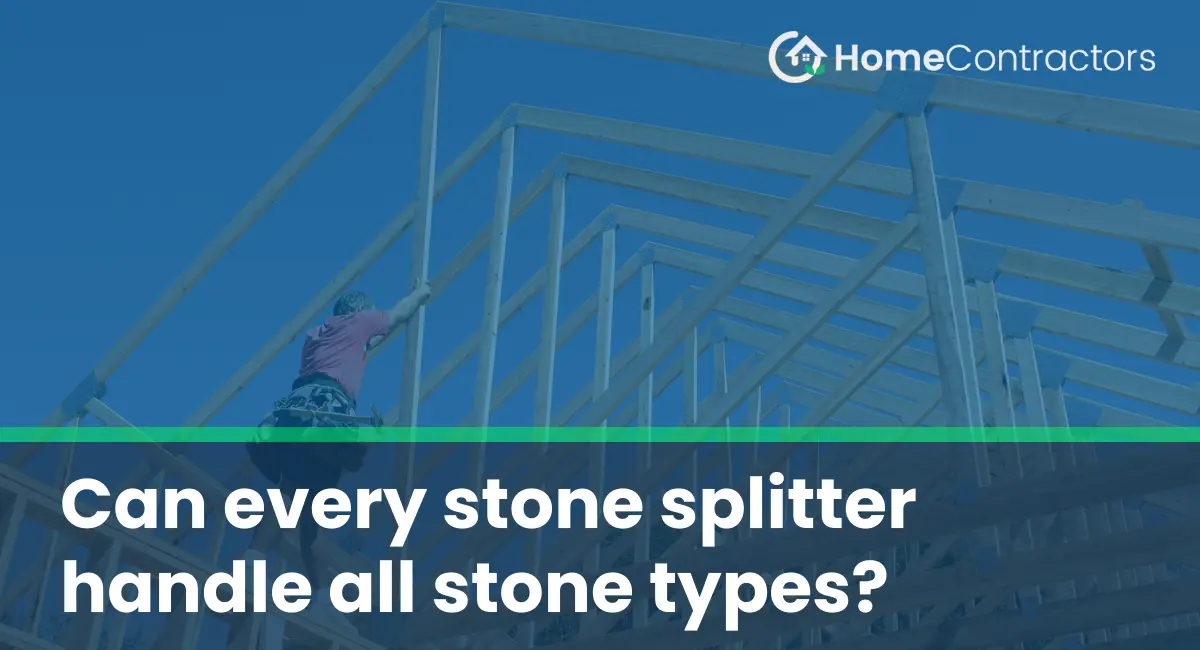Stone splitters are powerful machines used in the construction and landscaping industry to split large stones into smaller, more manageable pieces. They are designed to provide efficiency and accuracy in stone splitting tasks, saving time and reducing manual labor. However, not all stone splitters are capable of handling every type of stone. In this article, we will explore the different factors that determine whether a stone splitter can handle a particular stone type.
Understanding Stone Splitters:
Stone splitters are hydraulic or mechanical machines that apply significant force to break stones along their natural cleavage planes. They consist of a stationary base and a movable blade or blades that exert force against the stone. These blades are commonly made of hardened steel and can be customized based on the desired size and shape of the split stone pieces.
Factors Affecting Stone Splitter Compatibility:
1. Stone Hardness:
One of the most crucial factors in determining a stone splitter’s compatibility with a particular stone type is the hardness of the stone. Stone hardness is measured using the Mohs scale, which ranks minerals from 1 (softest) to 10 (hardest). Stones with a lower Mohs scale rating, such as limestone or sandstone, are generally easier to split. In contrast, stones with a higher rating, such as granite or quartzite, can be more challenging to split. Stone splitters need to exert more force and have stronger blades to handle harder stones effectively.
2. Stone Size and Shape:
The size and shape of the stone being split can also impact the compatibility of a stone splitter. Larger and irregularly shaped stones may require a more powerful stone splitter to handle the splitting process efficiently. Additionally, some stone splitters are designed for specific stone sizes or dimensions, making them less suitable for stones outside of their specified range.
3. Machine Capacity:
Each stone splitter has its own maximum splitting force and blade capacity. These factors determine the machine’s ability to handle various stone types. When selecting a stone splitter, it is essential to consider the machine’s specifications and ensure it can accommodate the specific stone type you are working with. Exceeding the machine’s capacity could lead to inefficient splitting or even damage to the splitter.
4. Blade Maintenance and Replacement:
Blades of stone splitters undergo wear and tear over time due to the forceful impact against the stone. As blades become dull or damaged, the splitting efficiency decreases. A stone splitter designed for a particular stone type may require specific blade materials or configurations to ensure optimal performance. Regular blade maintenance and replacement are crucial for consistent and effective stone splitting.Not every stone splitter can handle all types of stones. The compatibility of a stone splitter with a particular stone type depends on various factors, including stone hardness, size, shape, machine capacity, and blade maintenance. It is essential to consider these factors when selecting a stone splitter to ensure efficient and successful stone splitting operations. By understanding the limitations and capabilities of stone splitters, construction and landscaping professionals can choose the right equipment for their specific stone splitting needs.
